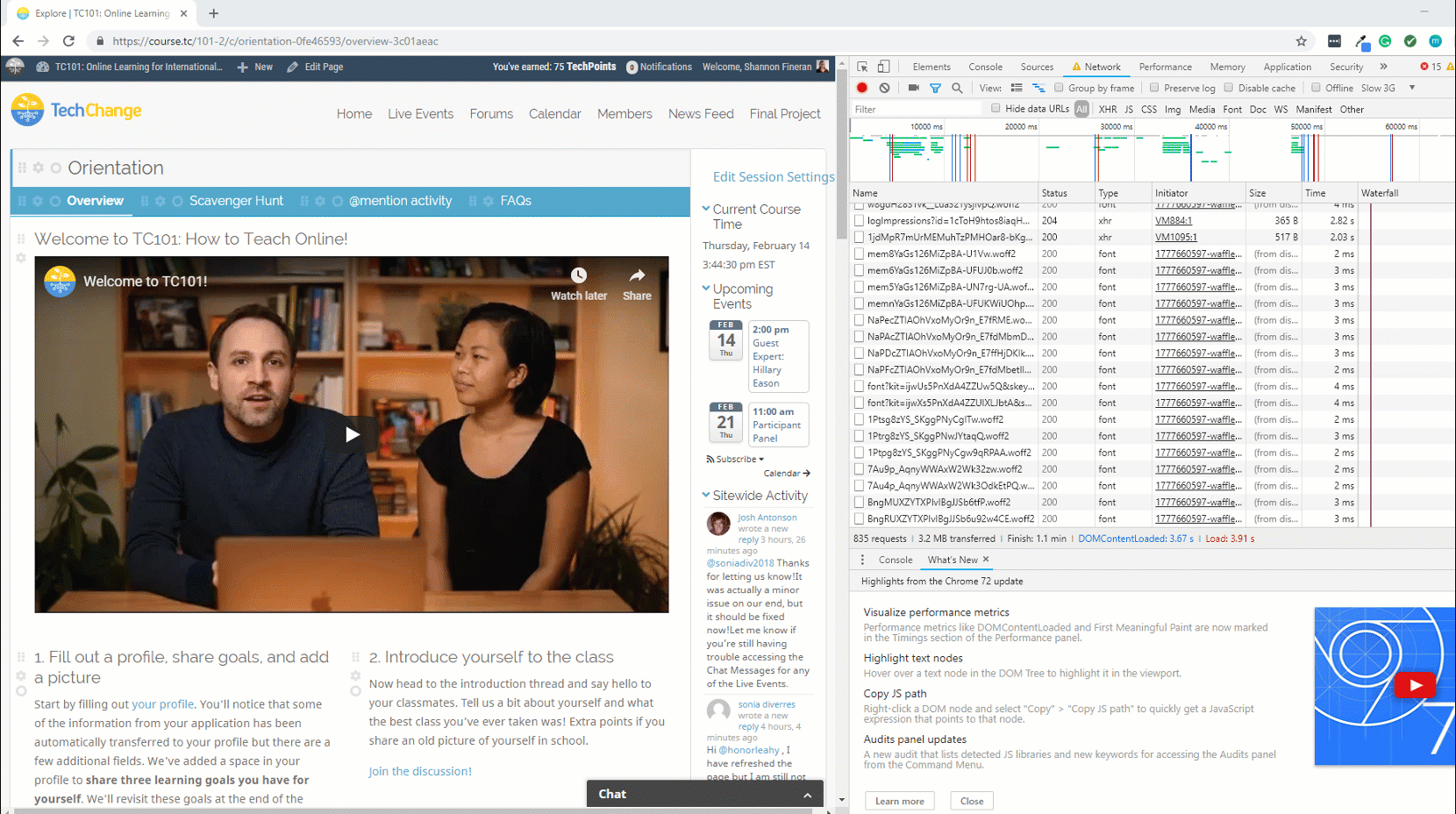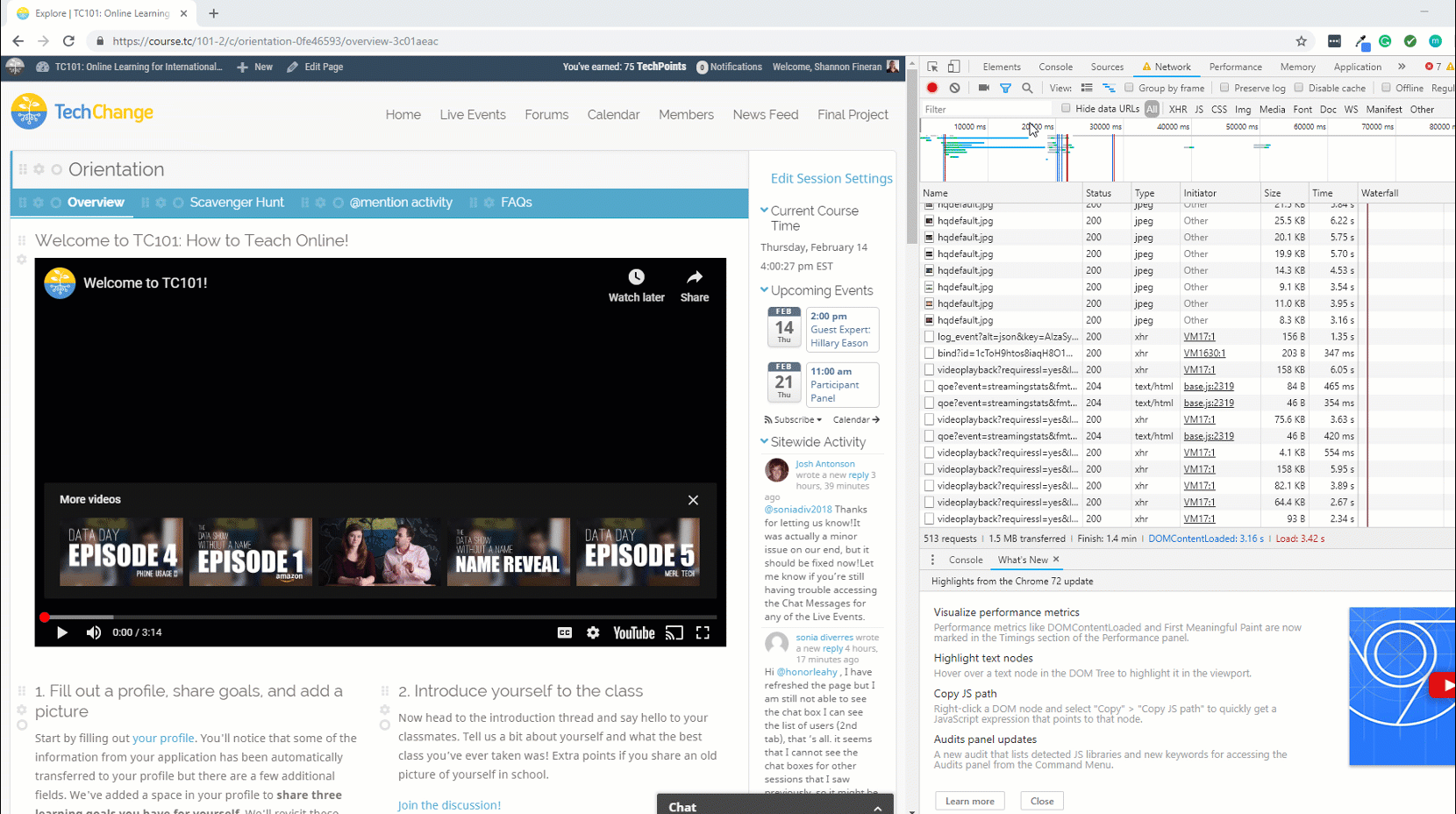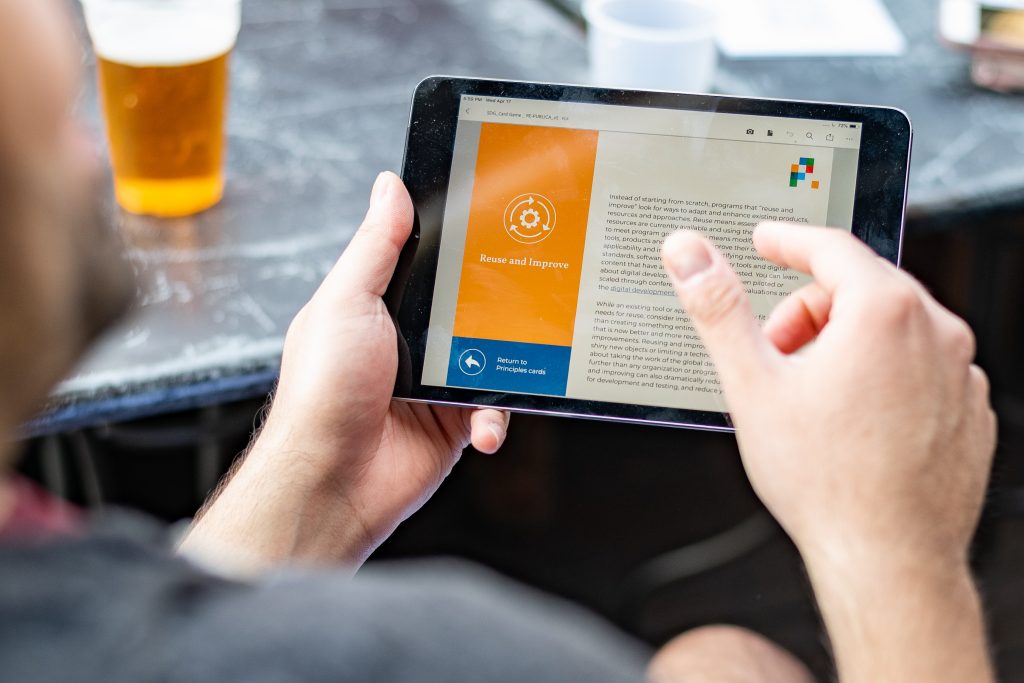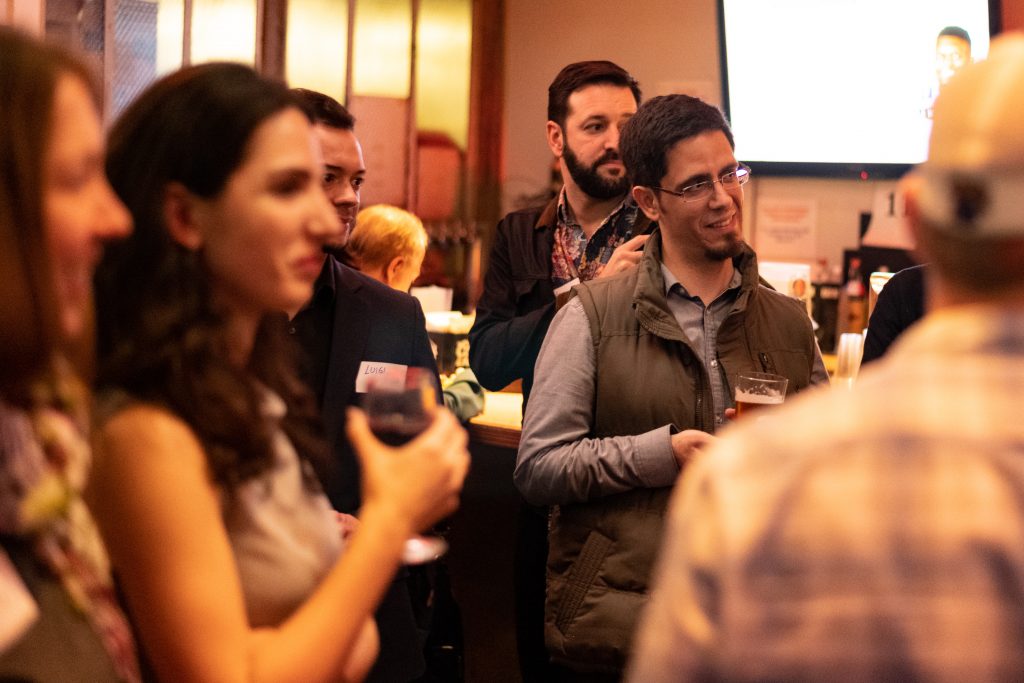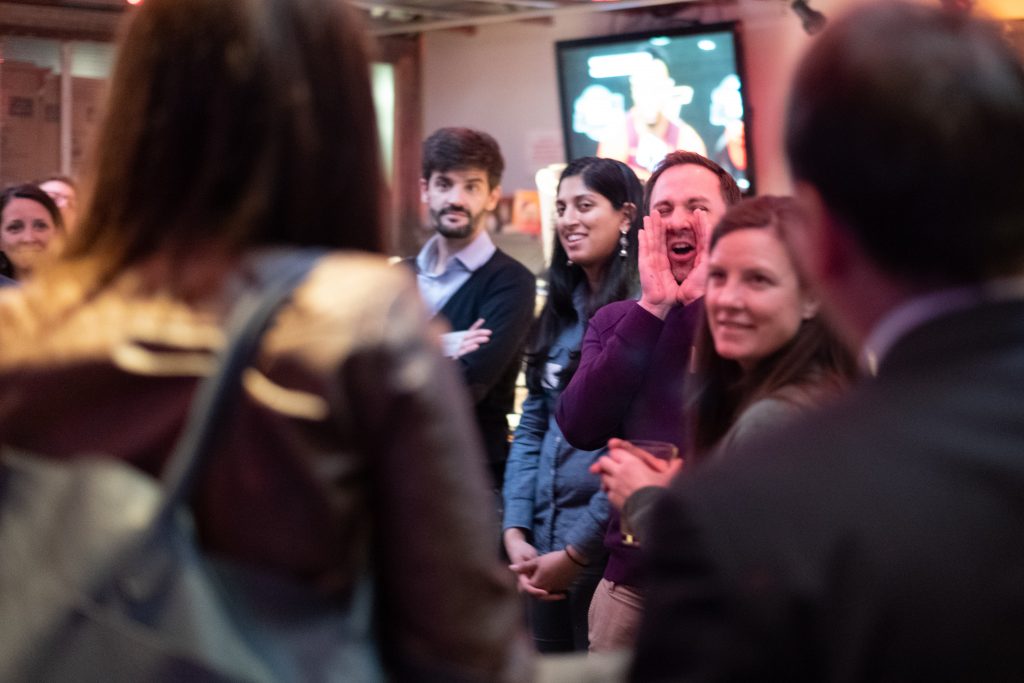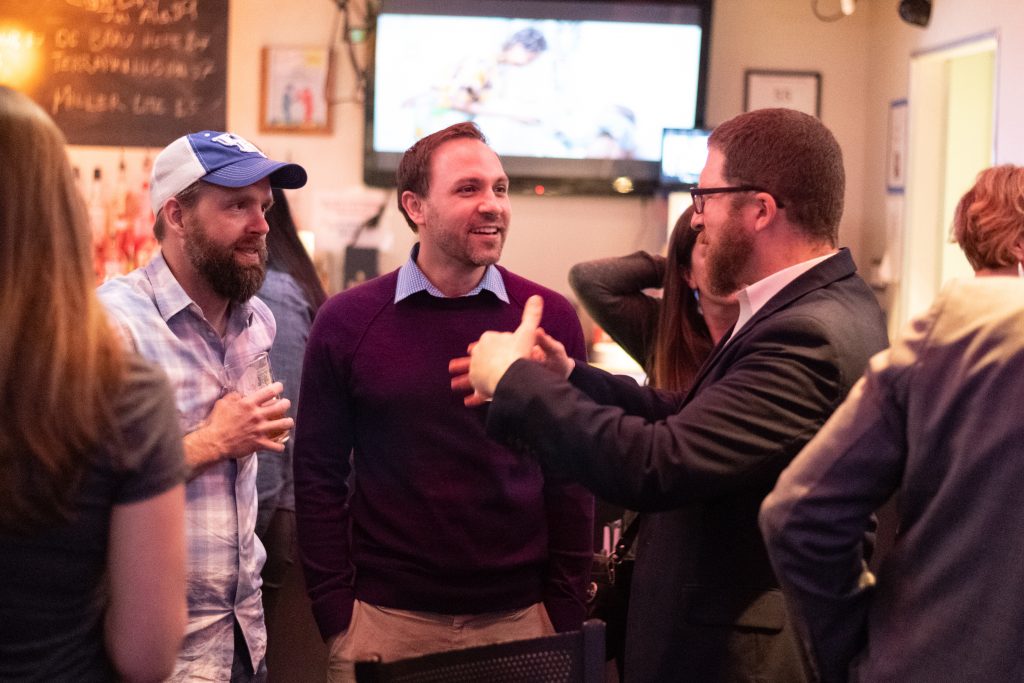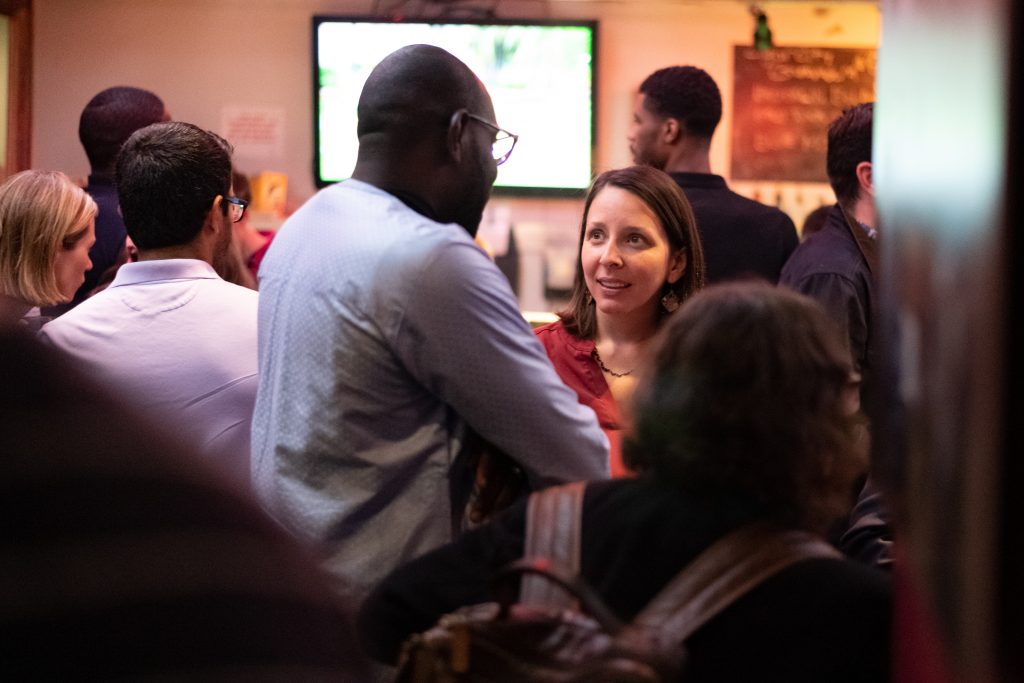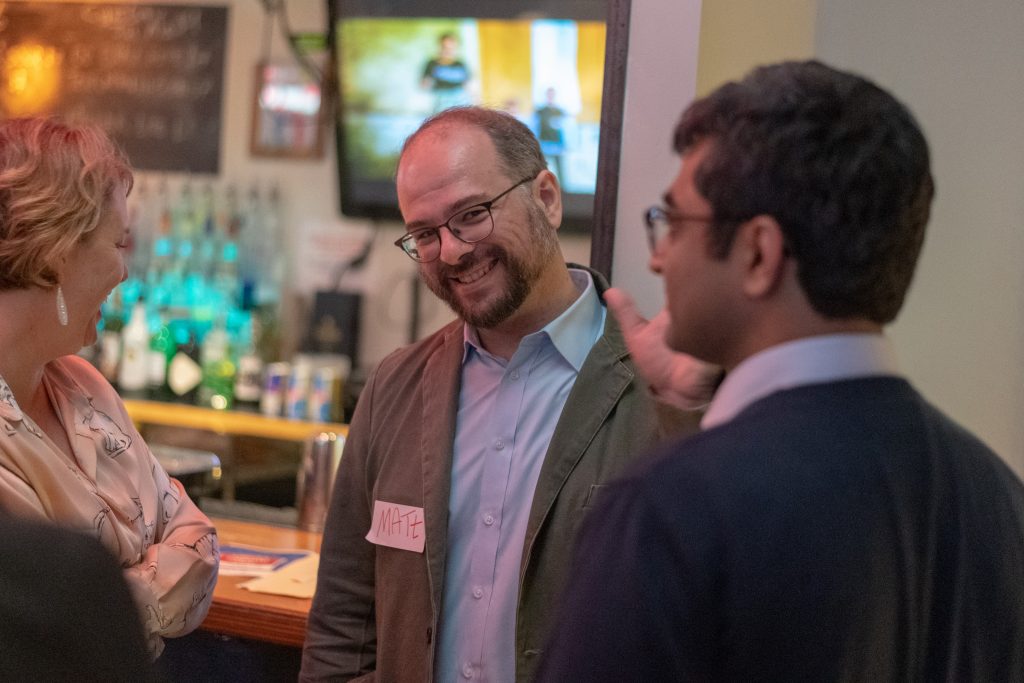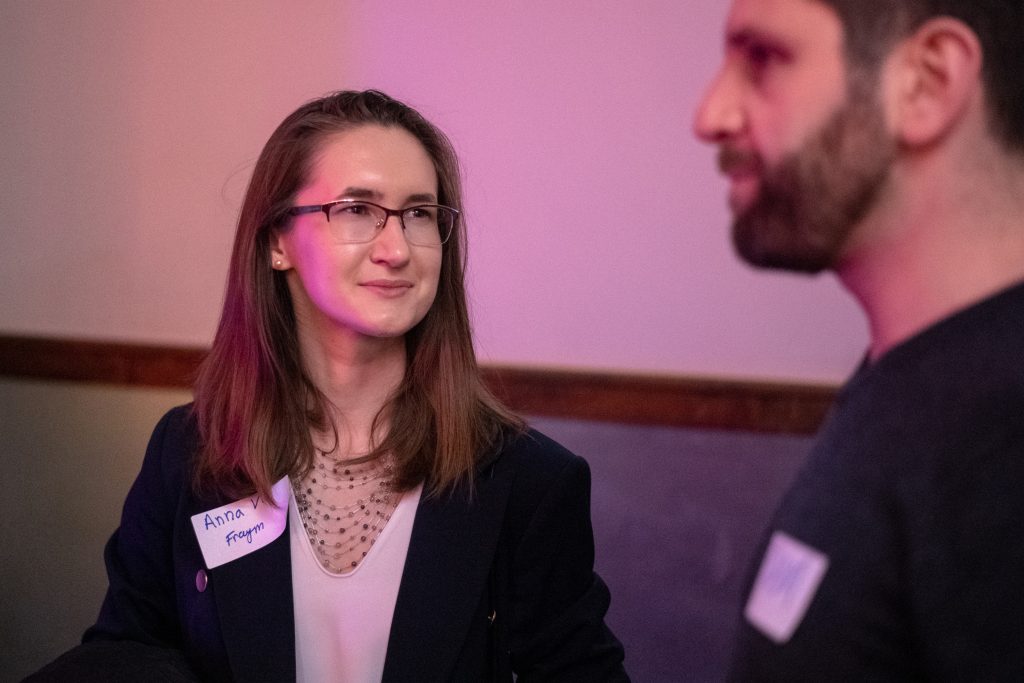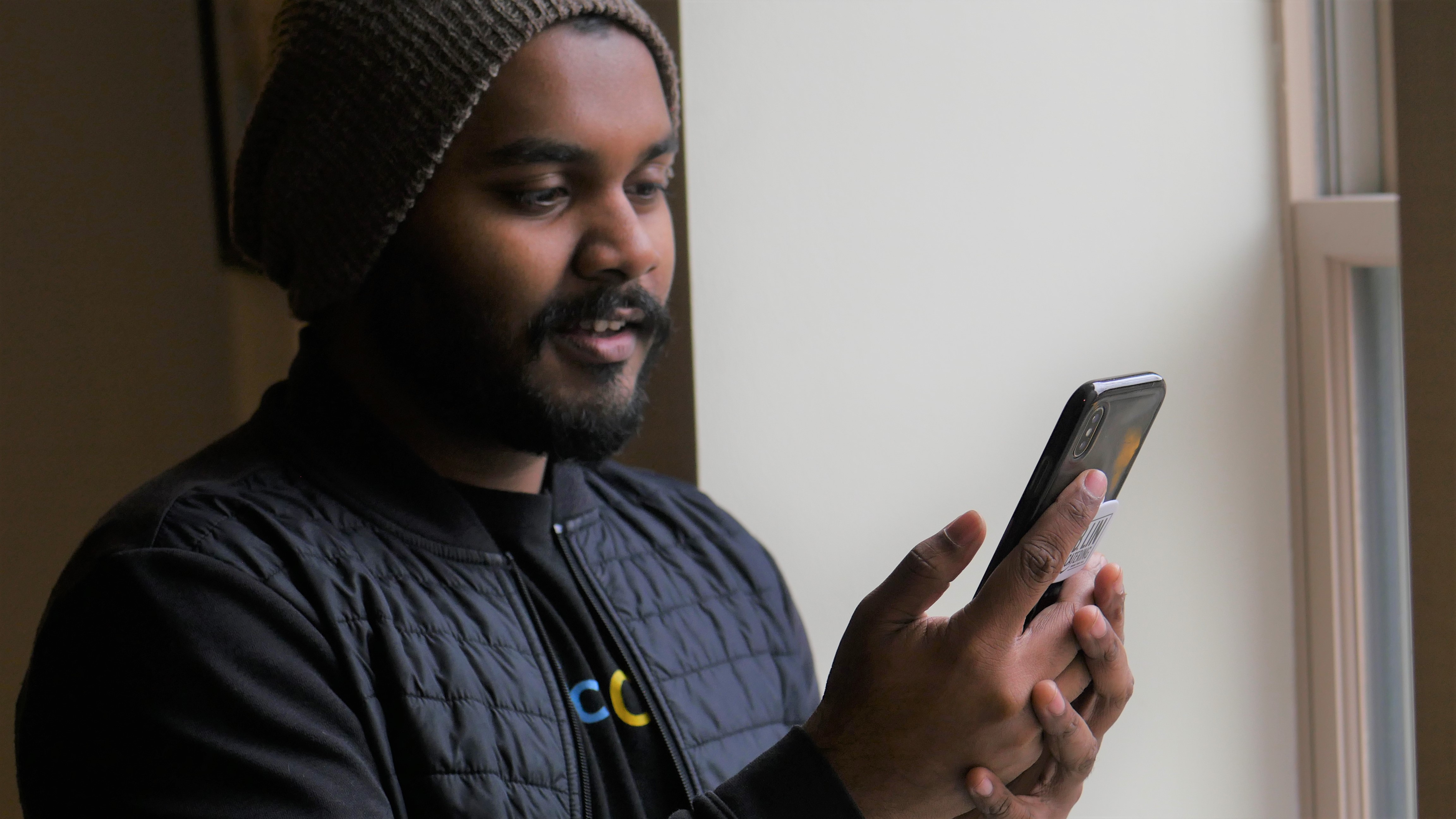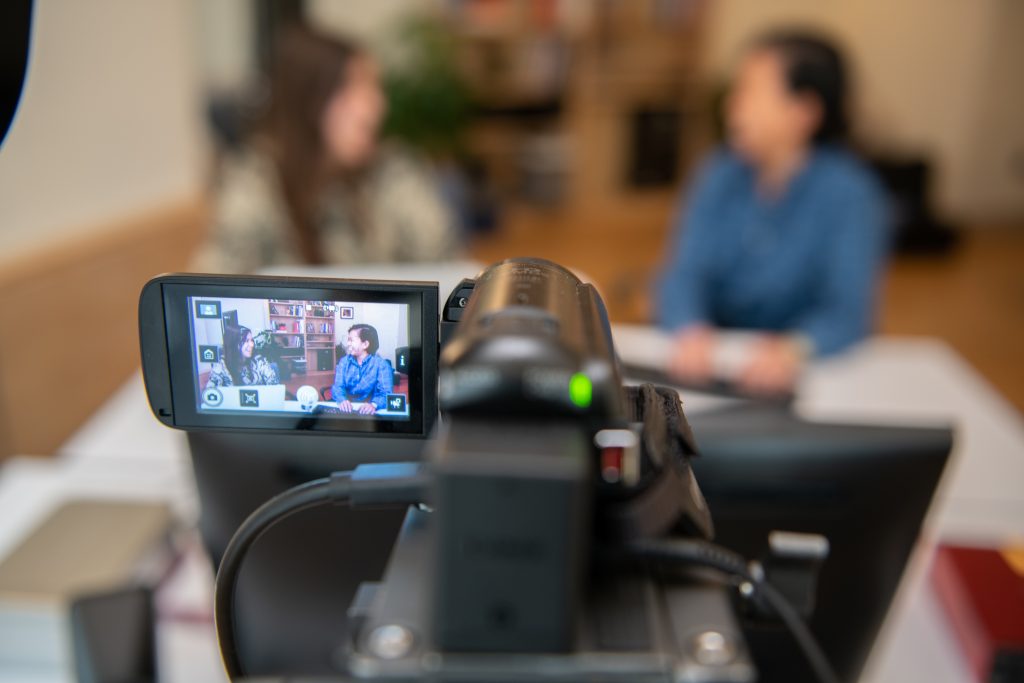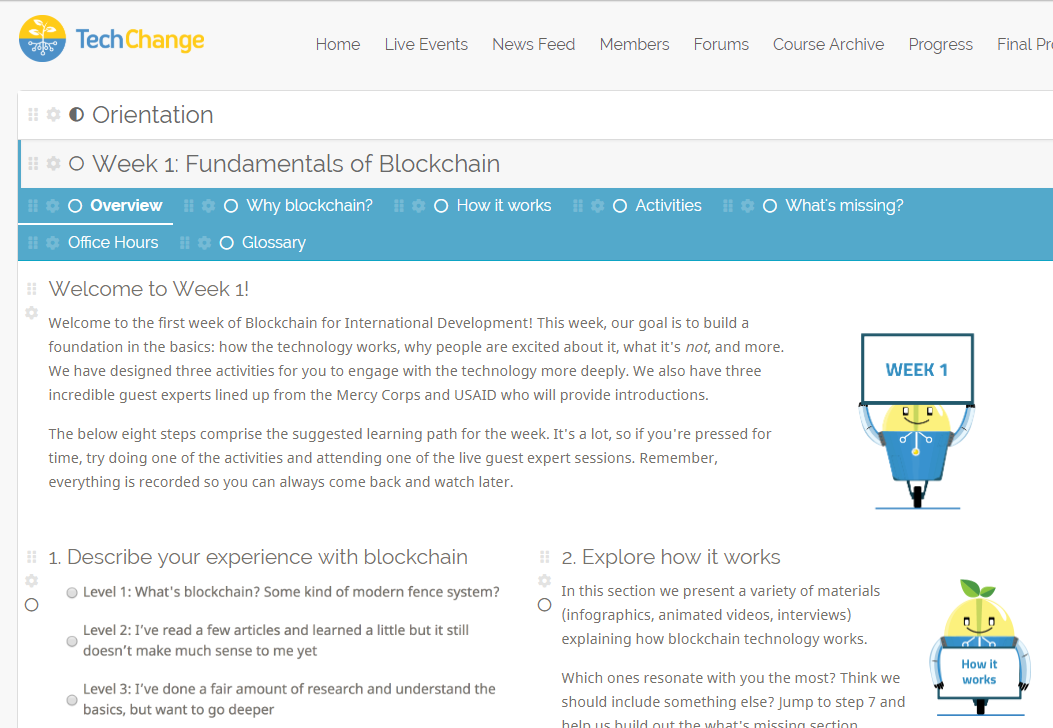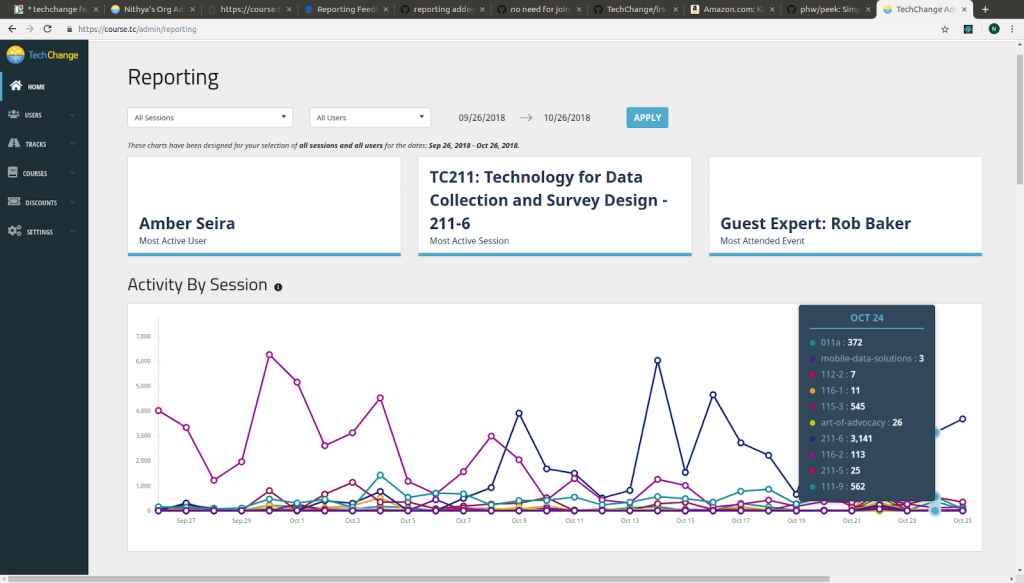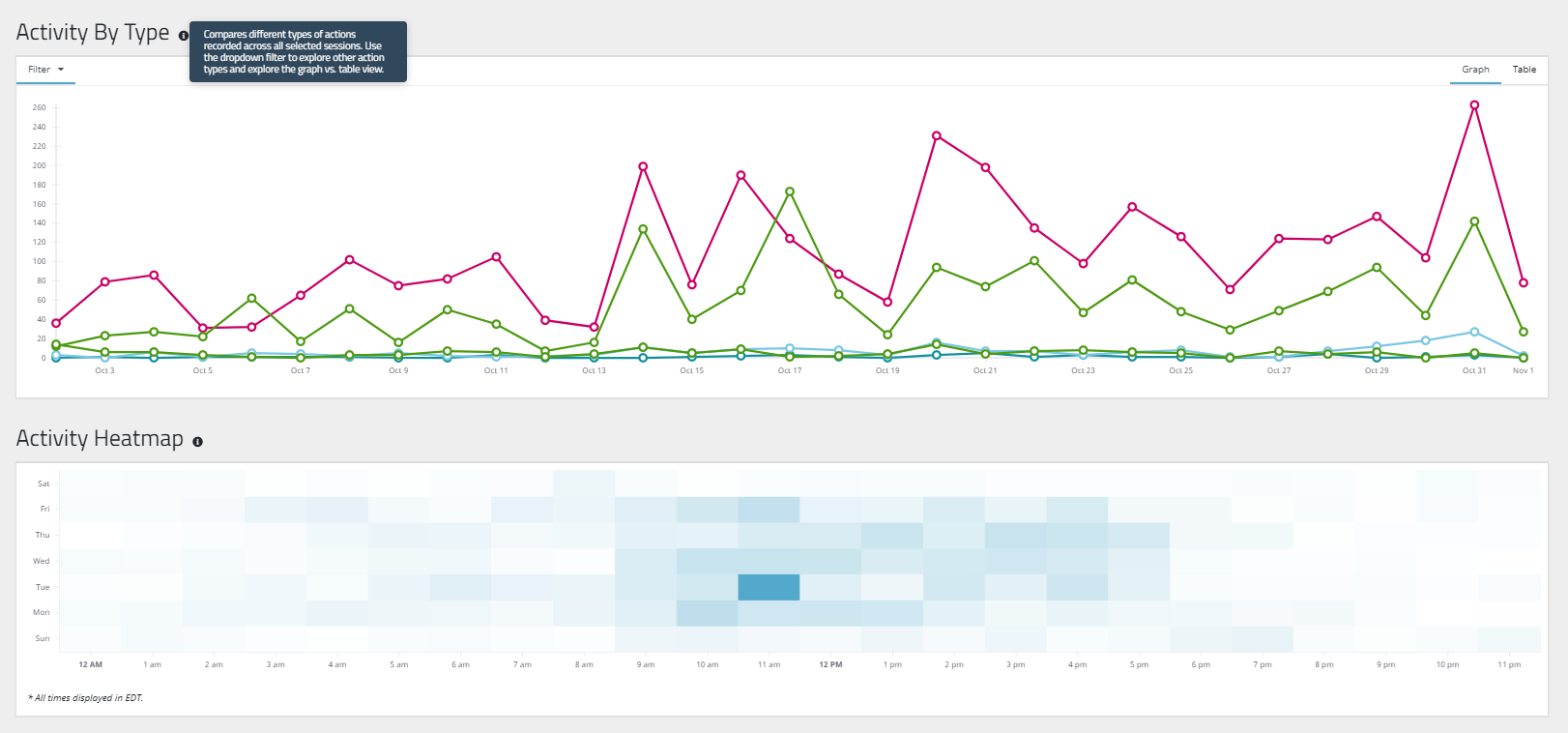Alyssa Luisi joined the TechChange team last week as an Instructional Design contractor. To introduce her to the team and our learning community, we sat down for a short Q&A.
Q: How was your first week?
It’s been great! Even while working remotely I felt very welcomed by the team, and diving into the projects was really straightforward. I am grateful to have had the chance to visit the office this week-it’s such a nice space and being here has really helped me get a fuller picture of how everyone collaborates. I’m also loving my new TechChange t-shirt!
Q: Could you share a bit about your background before TechChange?
I recently graduated with my MA in Anthropology & Sociology of Development from the Graduate Institute of International and Development Studies. I spent the past two years living in Geneva, Switzerland, with an exchange in Rio de Janeiro, Brazil, where I did some work with a local think tank focused on policy issues in BRICS countries. After graduating, I returned to my home state of New Jersey, where I am currently based. Prior to going back to school, I worked in the New York/New Jersey area in various roles involving program management, travel planning, and supporting internal learning and change management initiatives. I’m also an alumna of the College of William and Mary, where I studied International Development, with a focus on analyzing community-based development models.
Q: What originally interested you about joining TechChange?
The chance to contribute to influencing the international development space by offering accessible and engaging learning opportunities on key topics was exciting to me. The team has done a great job of building a global network with a wide variety of organizations, and I love how the courses and workshops bring together people with hugely different backgrounds and experiences around the world! Plus, it’s easy to see that team members are supportive of one another and driven to support TechChange’s mission.
Q: How does Instructional Design fit into your interests? What interests you in your projects?
I’m looking forward to leveraging my past training experiences to design content that really ‘sticks’ with learners. I love creating moments where participants feel like they’ve gained something that could be transformative to their work. This role also allows me to get an in-depth view of current initiatives and frontiers in really relevant areas like digital health and agriculture! For example, using digital tools to enable access to health resources in remote or unstable areas has been an increasingly important interest for me.
Q: Anything you look forward to working on or learning at TechChange?
I’m looking forward to learning from TechChange’s expertise in teaching online, especially how to optimize student interaction!
Q: Lastly, what’s something that not a lot of people know about you?
Sometimes when I need a boost of energy during the day, I pump up some Bollywood music.


